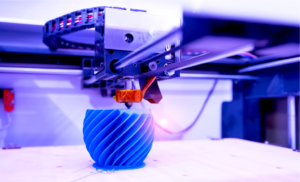Carlsbad Plumber is the system of pipes and fixtures that delivers water and removes waste in residential, commercial, and industrial settings. Plumbers are responsible for maintaining these systems and ensuring they function properly and efficiently.
They utilize various tools and equipment, interpret blueprints, and inspect plumbing systems to identify any issues. They also use soft skills to communicate effectively and problem-solve.

The job duties of a plumber involve installing, maintaining and repairing plumbing systems and fixtures in residential, commercial, and industrial structures. They are also responsible for inspecting pipes and other equipment to ensure compliance with building codes. Plumbers must be able to follow blueprints and schematics to determine the layout of pipes and other mechanical systems. In addition, they must be able to identify and troubleshoot problems with plumbing systems. Plumbers also need to have good customer service skills and be able to explain complex issues in simple terms.
Plumbers must also be able to work with other construction professionals, such as engineers and architects, to design plumbing systems for new buildings or renovation projects. This may include preparing bids, budgets, and cost estimates. Other responsibilities include performing light construction, carpentry, oil, trouncing, flooring, and electrical work as needed.
Since plumbers often work in tight spaces, they must be able to use hand or power tools to perform their duties. They also need to be able to crawl into small spaces and work in awkward positions. Additionally, they need to have the physical stamina to lift heavy equipment and tools. Because of this, it is important for plumbers to keep up with the latest developments in the plumbing industry. This can help them provide their clients with the best possible services and ensure that all regulations are followed. It is also helpful for plumbers to have strong critical thinking and problem-solving skills, as they are frequently called on to solve emergency situations like burst pipes and clogged drains.
Education and Training Requirements
The minimum requirement to become a plumber is a high school diploma, but many choose to attend a technical or trade school that offers a plumbing program. These programs provide students with the skills and knowledge needed to be successful in the career, including reading blueprints, installing systems, and understanding local plumbing codes and regulations. They also include hands-on training so students can experience working with pipes and other plumbing components before entering the workforce.
In addition to completing formal education and hands-on training, plumbers must be licensed by the state where they intend to work. This process varies by municipality, but typically involves passing an exam and meeting other requirements set by the government agency responsible for licensing plumbers. In New York, this is handled by the City Department of Buildings. Plumbers must also renew their licenses periodically, which usually requires completing continuing education courses to ensure they are up to date on the latest techniques, safety standards, and code changes.
Plumbers often work directly with customers, so they must have excellent customer service skills to communicate effectively and answer any questions. They must also be able to follow instructions and complete plumbing tasks in a timely manner. In some cases, plumbers may need to take on a supervisory role and oversee other employees. Those who wish to advance in their careers can pursue additional training, such as becoming an engineer, to open up more job opportunities.
Because plumbers are required to work with dangerous materials, they must be aware of the risks and protect themselves accordingly. They must wear appropriate clothing, gloves, and masks to prevent contamination when handling pipes and other materials. In particular, plumbers who work with sewage must be careful to avoid contact with human waste, which can contain infectious diseases like cholera, typhoid, and hepatitis. Plumbers who work with old or faulty plumbing may also be at risk of exposure to lead, which can cause brain damage and other health issues.
Work Environment
In the plumbing profession, there is a lot of pride in craftsmanship. Plumbers know that their work makes a difference in the safety and well-being of the public. They are able to see the tangible results of their work with every meticulously installed pipe or impeccably repaired fixture. This sense of satisfaction is why many people choose to become a plumber.
The work environment for a plumber varies depending on their specialty and the field in which they are employed. If they are working on a construction project, they will collaborate with architects and builders to install plumbing systems according to specifications. If they are working as an industrial plumber, they may be exposed to dangerous chemicals and high-pressure pipes. They also need to be prepared for the occasional middle-of-the-night emergency when a pipe bursts at two in the morning.
Plumbing is a labor-intensive career, and it can be physically demanding. Plumbers often lift heavy objects, squeeze into tight spaces, and work in chilly weather or scorching heat. It is important for them to stay healthy and fit in order to keep up with their responsibilities. Some plumbers choose to be self-employed and have more control over their work schedules and choice of projects.
A good plumber can make a lot of money, especially if they are willing to work extra hours or travel outside their normal service area. The work is rewarding and challenging, and it is not uncommon for plumbers to be on call at all times of the day and night to address urgent issues.
If you’re looking for a career that is both rewarding and challenging, consider becoming a plumber. Plumbers play an essential role in our daily lives and provide vital services to homes, businesses, and industries. They are responsible for ensuring that we have access to clean drinking water and functioning waste systems, so they deserve to be paid a fair wage for their hard work. With a little training and effort, you can be on your way to a successful career in the plumbing industry!
Salary
Plumbing is a skilled trade that pays well and offers real job security. It’s one of the few trades that offers salaries above the average for all occupations, making it a solid career choice for people who want to work with their hands and their minds. In addition to a decent salary, the industry also provides opportunities for advancement and specialization that can boost earning potential.
Plumbers’ salary levels are typically determined by their level of experience and education. Apprentices usually start at around $40,000, while journeymen can make upward of $100,000. Specialized plumbers with advanced knowledge in areas like green plumbing and heating systems can command even higher wages. In the US, demand for plumbers continues to grow steadily due to aging infrastructure and increased sustainability initiatives.
In addition to experience, location can also play a role in plumbers’ earning potential. Large cities like New York or San Francisco offer significantly higher salaries than smaller towns in states with lower cost of living. The plumbing industry also offers a number of benefits, including 401(k) retirement plans, health insurance, and vacation time.
While the average salary for plumbers is above the national average, individual rates can vary greatly depending on location and experience. Some states pay more than others, and the rate of pay can change dramatically based on whether you are working for a company or a private contractor.
The job outlook for plumbers is positive, with a predicted growth of 2% between 2022 and 2032. This is above the average for all occupations and reflects the continued need for plumbers to repair and maintain existing water, gas, and sewer systems. With a steady stream of new construction and an aging infrastructure that requires ongoing maintenance, the need for qualified plumbers will continue to grow for years to come. As a result, the average salary for plumbers is expected to rise slightly in the near future. To stay on top of the latest trends and developments, plumbers should continually invest in their craft. New tools and methods are constantly being developed, and staying up-to-date with the latest innovations will help you increase your value as a plumber and increase your salary potential.





